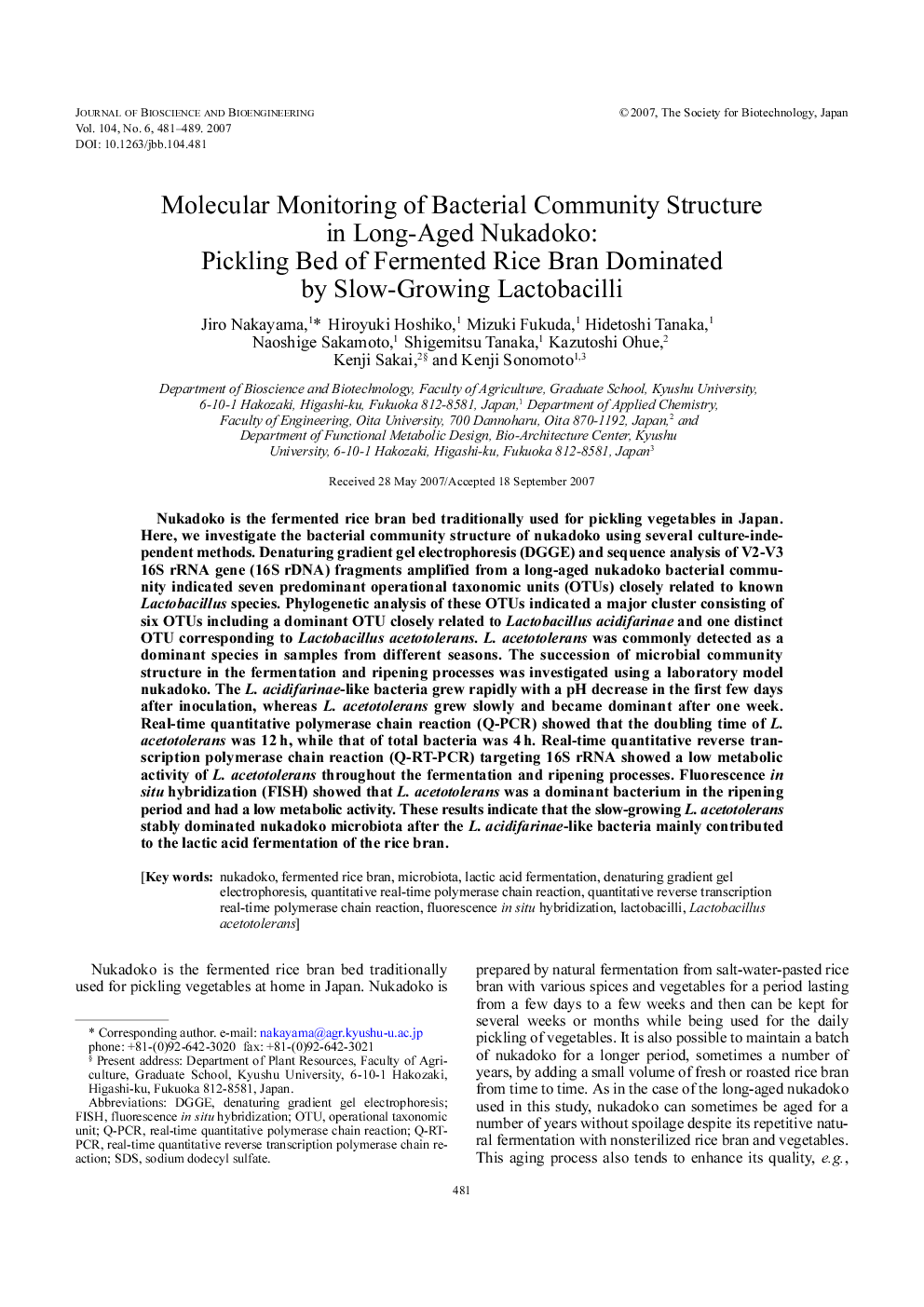| Article ID | Journal | Published Year | Pages | File Type |
|---|---|---|---|---|
| 22126 | Journal of Bioscience and Bioengineering | 2007 | 9 Pages |
Nukadoko is the fermented rice bran bed traditionally used for pickling vegetables in Japan. Here, we investigate the bacterial community structure of nukadoko using several culture-independent methods. Denaturing gradient gel electrophoresis (DGGE) and sequence analysis of V2-V3 16S rRNA gene (16S rDNA) fragments amplified from a long-aged nukadoko bacterial community indicated seven predominant operational taxonomic units (OTUs) closely related to known Lactobacillus species. Phylogenetic analysis of these OTUs indicated a major cluster consisting of six OTUs including a dominant OTU closely related to Lactobacillus acidifarinae and one distinct OTU corresponding to Lactobacillus acetotolerans. L. acetotolerans was commonly detected as a dominant species in samples from different seasons. The succession of microbial community structure in the fermentation and ripening processes was investigated using a laboratory model nukadoko. The L. acidifarinae-like bacteria grew rapidly with a pH decrease in the first few days after inoculation, whereas L. acetotolerans grew slowly and became dominant after one week. Real-time quantitative polymerase chain reaction (Q-PCR) showed that the doubling time of L. acetotolerans was 12 h, while that of total bacteria was 4 h. Real-time quantitative reverse transcription polymerase chain reaction (Q-RT-PCR) targeting 16S rRNA showed a low metabolic activity of L. acetotolerans throughout the fermentation and ripening processes. Fluorescence in situ hybridization (FISH) showed that L. acetotolerans was a dominant bacterium in the ripening period and had a low metabolic activity. These results indicate that the slow-growing L. acetotolerans stably dominated nukadoko microbiota after the L. acidifarinae-like bacteria mainly contributed to the lactic acid fermentation of the rice bran.
